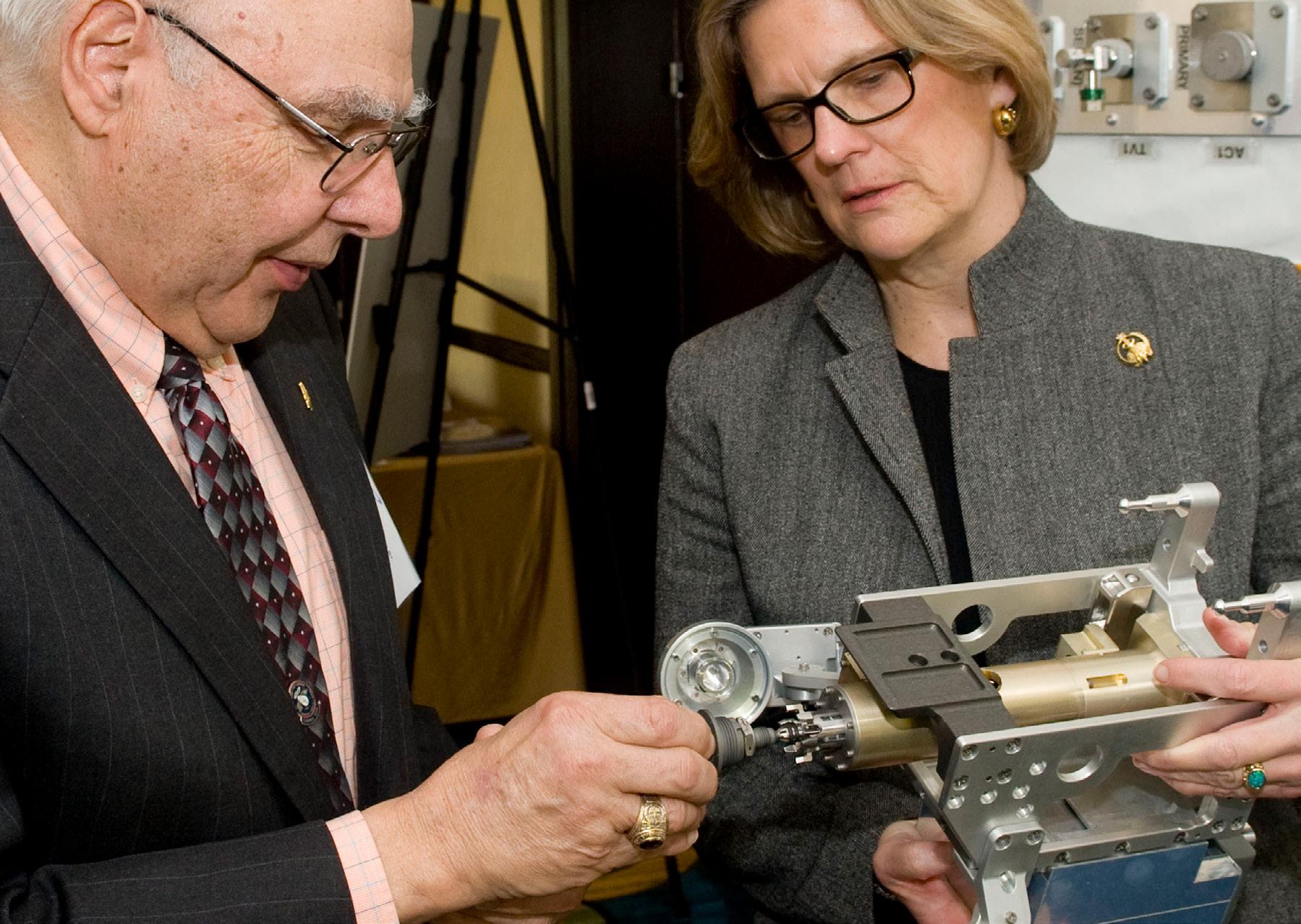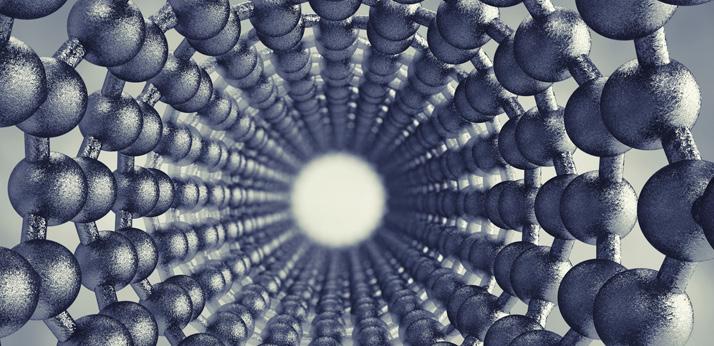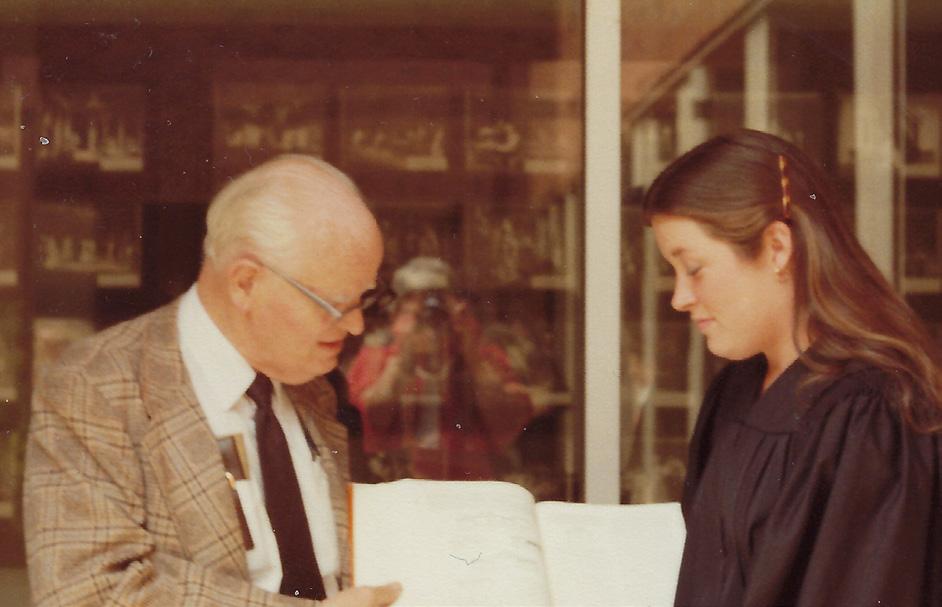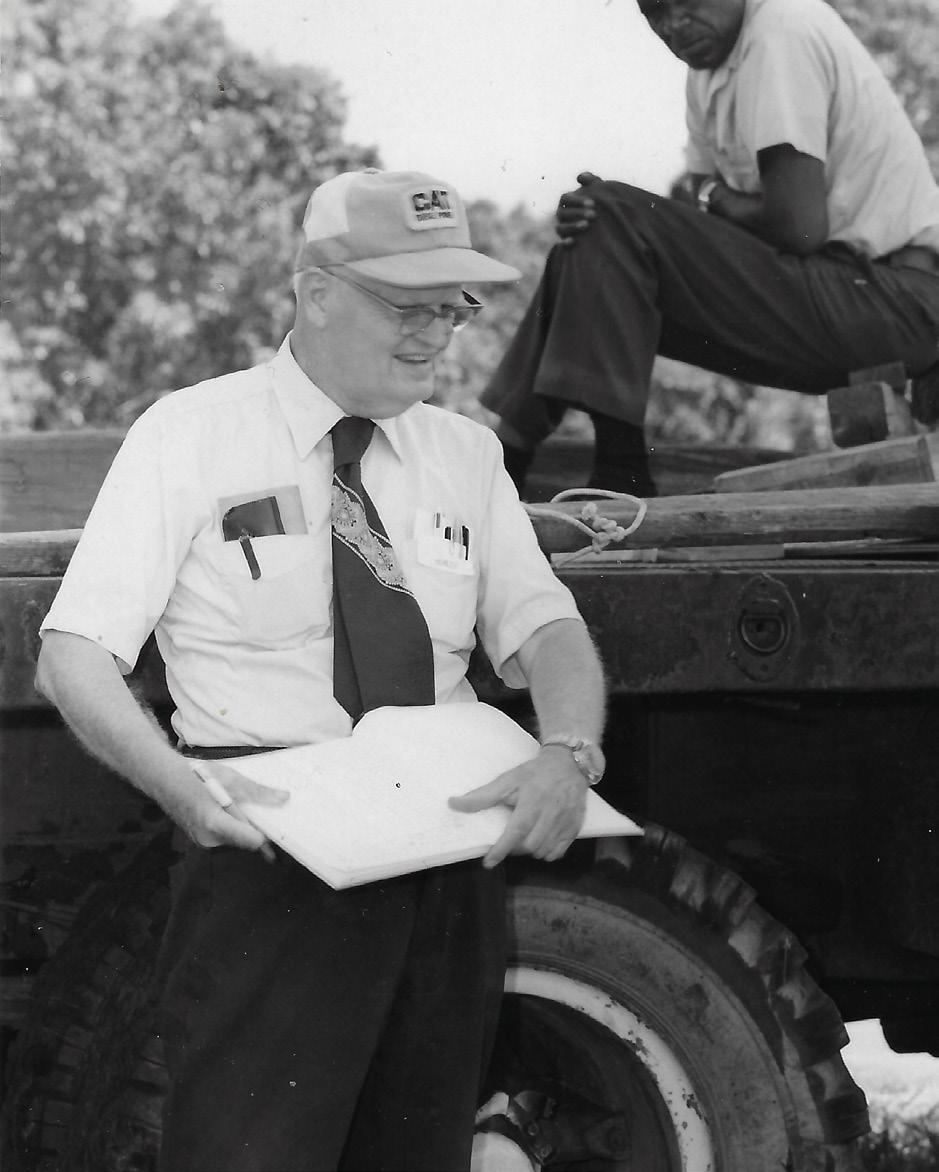
17 minute read
On The Move
GODDARD INNOVATORS FEATURED IN NASA TECHNOLOGY TRANSFER PROGRAM INVENTOR HALL OF FAME NASA celebrates legendary innovators through the Inventors Hall of Fame, an initiative headed by the NASA Technology Transfer Program. Without the brilliant minds who envision and design NASA technologies, commercialization wouldn’t be possible.
The newly relaunched Inventors Hall of Fame website features several prominent Goddard innovators, including Frank Cepollina, George Alcorn, Mike Hinchey, and John Vranish.
Advertisement
George Alcorn joined Goddard in 1978 and invented a smaller, more sensitive X-ray spectrometer that improved the way scientists gather data on faraway solar systems. As an African American physicist, engineer, and educator, Alcorn encouraged Goddard to hire more women and minorities, earning him the NASA Equal Opportunity Medal, among other prestigious awards.
Frank Cepollina, better known by his nickname “Cepi,” worked at Goddard on engineering solutions for spacecraft and satellites. Known as “the father of on-orbit servicing,” Cepollina led a team that designed and built custom instruments that corrected the Hubble Space Telescope’s flawed optics.
Mike Hinchey worked at NASA for decades to develop reliable, verifiable software that can be changed and adapted as needed. He served as director of the NASA Software Engineering Laboratory, focusing on self-adaptive software suitable for exploration missions.
John Vranish holds 37 U.S. patents and won Goddard Inventor of the Year six times. His “capaciflector” alone has eight patents with multiple commercial licenses. His inventions span many technology categories, from electronics to mechanics, and his “3D sprag” technology was demonstrated on the John Glenn Shuttle Flight mission in 1998.
Learn about these inventors and more here: https://technology.nasa.gov/ihof/
Goddard engineer invents new graphene transfer method
Photo Credit: NASA/Bill Hrybyk
Photo: Frank Cepollina and Kathryn Sullivan discuss robotic refueling at the 2012 Goddard Memorial Symposium.

Mahmooda Sultana has worked with graphene and other nanomaterials for nine years at Goddard. 3 Photo Credit: NASA/Bill Hrybyk The Spark - Spring 2020
Carbon is an element known for its versatility. Carbon atoms bond with hydrogen, oxygen, nitrogen, and other atoms to stitch together the fabric of the human body. Strong, carbon-based bonds bring structure to every organic component necessary for life, including muscle cells, neurons, proteins, and hormones. Thanks to carbon, your eyes can read this article and your brain can process the information.
While carbon is abundant in organic compounds, it’s also found in the realm of inorganic materials. When carbon atoms bond with each other in a specific way, they can form diamonds. With a different arrangement, the atoms can configure into graphite, the “lead” of modern pencils.
Researchers at NASA’s Goddard Space Flight Center are studying a different form of carbon called graphene, a one-atom-layer-thick structure with remarkable properties that make it well-suited for space applications. Graphene also has commercial applications in circuits, solar cells, medical devices, and other fields.
Goddard engineer Mahmooda Sultana, who has worked extensively with graphene and other nanomaterials during her nine years at NASA, has invented a new way to transfer an atom-thin sheet of graphene from a growth substrate to its intended destination. With this new method, graphene transfer is faster, less error-prone, and scalable for larger production.
GRAPHENE ADVANTAGE “When I first came to Goddard, I was fascinated by all the space missions happening here,” Sultana says. “I wanted to work on flight missions, but at the same time, I also wanted to look for new technologies that could open the door to entirely new kinds of missions that had never been done before.”
Sultana worked with nanomaterials while pursuing her Ph.D., so when she came across graphene, it piqued her interest. With a strong background in thermodynamics and kinetics, Sultana leads NASA’s efforts to research and produce graphene. She’s succeeded at making high-quality, large-area graphene in her lab at Goddard.
Graphene continues to attract interest around the world. A 2019 article in the journal Nature Nanotechnology describes a “wealth of graphene research, patents, and applications” published over the past decade. Already, graphene can be found in commercial products, with early examples including automotive coatings and touch screens.
Graphene’s carbon atoms bond with each other to form a lattice of hexagons. This 2D structure outcompetes other commonly used materials on several measures – it’s harder than diamonds, stronger than steel, and more conductive than copper. Since carbon is everywhere, it’s an easy resource to obtain.
Transparent to the human eye and one million times thinner than a human hair, graphene is one of the most promising nanotechnologies currently being studied. Sultana has received funding from Goddard’s Internal Research and Development (IRAD) program to develop graphene-based detectors and other instruments for spacecraft.
FORMING A BOND While making devices from 2D materials, Sultana says she deals with two main challenges. To create 2D materials such as graphene, an engineer must grow the 2D material on a metal substrate, typically made of copper foil. Once a layer of graphene has formed on both sides of the foil, the engineer must transfer the graphene from its original growth platform to its final substrate as part of a device.
“This transfer process is just as critical as the growth process, if not more,” Sultana says.
When she first started growing graphene, Sultana completed most of the steps by hand. She added a coating of acrylic to the graphene and then used an acid solution to dissolve or “etch” the copper foil away from the graphene, leaving the graphene to float freestanding in liquid. At this point, she manually picked up the graphene with a glass slide and placed the entire slide in a water solution that removed the residual acid and copper.
“You have to repeat this step many times to remove the acid and copper residues completely,” Sultana explains.
In the final step, Sultana had to place the graphene on its final substrate, removing the acrylic layer and allowing the graphene to bond to its new surface. The whole process took days and involved intensive attention, with human intervention required at multiple points during the process.
Repeated handling of the graphene also resulted in a greater amount of defects – instead of lying perfectly flat, the graphene developed folds and holes, reducing its quality and effectiveness.
“Because this process was so labor-intensive and time-consuming, I was motivated to think about a better approach,” Sultana says.
FAST AND SCALABLE Sultana’s graphene transfer method removes a degree of human error from the equation. With her new approach, she floats the graphene in a series of liquids that flow into a container and then drain from it. These liquids etch the various substrates and residues until only the graphene remains, ready to bond with its final surface. The entire process can be automated, leading to fewer defects by eliminating the need to move the graphene by hand.
In order to stick tightly to its final transfer substrate, the graphene must lie completely flat. That’s because it attaches to substrates through a phenomenon in molecular physics called van der Waals forces. On a molecular level, graphene interacts with the atoms of a substrate’s surface, conforming tightly to the surface topology. Folds can keep the material from adhering properly, preventing the graphene from bonding to its substrate. When the graphene grows with no defects, “it’s incredibly stable,” Sultana says. “It’s not going to come off.” The new method also reduces the amount of time it takes to transfer graphene. Through automation, the process can take place without a technician physically present to complete the necessary steps.
Sultana’s method has one additional benefit – it’s scalable.
“When I manually take the graphene piece out using a glass slide, I can typically only handle a 1-centimeter-by-1-centimeter sample,” Sultana says. “With this new system, you can transfer much larger pieces with significantly fewer defects.”
PROMISE OF NANOMATERIALS Sultana says she’s excited about the future use of graphene and other nanomaterials for space instruments, though she acknowledges that leaps in technology development take time to unfold. As graphene use accelerates in the private sector, Sultana says that her patent-pending graphene transfer method has applications for companies interested in manufacturing and supplying large-area graphene.
The transfer method also fits well with businesses focused on applications for 2D materials, including companies that produce solar cells, sensors, or water purification systems.
For those interested in licensing or learning more about Sultana’s graphene transfer method, please

Growing up in Cheverly, Maryland with a NASA inventor for a father, the five Kerley kids learned to expect the unexpected. A normal activity like fixing a broken car could turn into an engineering experiment when it involved James J. Kerley, Jr., who was an engineer at NASA’s Goddard Space Flight Center for nearly 30 years.
His eldest daughter, Catherine Kerley Castellan, recalls asking her dad for help with her 1964 Plymouth Barracuda, which was experiencing a strange vibration issue. Jim Kerley specialized in minimizing vibration throughout his career, applying his techniques to both sedans and spacecraft. Always favoring the hands-on approach, Jim Kerley was not the kind of person to call a mechanic or wait to see if the problem worsened.
Instead, he brought an oscilloscope home from his Goddard office one day and had Catherine drive the car while he sat in the back seat. As she drove, he threw open the car door and held the instrument outside to measure the car’s vibration patterns. Though unconventional, his solution worked. After fixing the problem, the car continued on its merry way, vibration free.
“He would always tell us, ‘You have to feel it,’” says Bernadette Maertens, Jim Kerley’s youngest daughter. “With him, it was always hands-on. He knew that was the best way to identify issues and come up with different ideas.”
As an inventor, husband, father, and involved member of his community and church, Jim Kerley infused innovation into everything he did. It didn’t matter if he was building an elaborate set for a theater production or designing a scaffold for a rocket. Problems existed to be solved in creative and unusual ways. Ideas sprouted from his mind one after the other in quick succession. His inventiveness resulted in 25 U.S. patents and four Canadian patents to his name, spread out between the early years of running his own business, Kerley Engineering, and the decades that followed at NASA.
Despite his robust portfolio of inventions, Jim Kerley never sought the spotlight. Instead, he reflected the light on others by teaching them and inspiring them to seek patents for their own work. “The hallmark of engineering has always been creative, inventive design,” Jim Kerley wrote in course materials for one of his NASA classes, published the year he passed away at age 73. True to his words, he embraced creativity and encouraged others along the way.
EARLY DAYS Born in 1920, Jim Kerley grew up in Pennsylvania, where his father, James. J. Kerley, Sr., worked on bridges and post offices as an engineer. Jim Kerley’s mother, a teacher, helped him with his schoolwork and church memorization. Full of pent-up energy, young Jim Kerley found it challenging to sit still in a chair until he finished his homework.
Catherine Castellan remembers her father commiserating with her when she worked on her own assignments. “He said that he technically sat in that chair, but he was up over the chair, under the chair, around the chair, and through the chair,” she laughs.
Jim Kerley and his brother, Tom, moved around Pennsylvania for their dad’s engineering work. They spent their free time roaming through the woods and climbing trees. The brothers’ frequent moves across the state meant that by the time they graduated high school, they had perfected the art of making new friends, a skill Jim carried with him for the rest of his life.
Jim Kerley followed in his father’s footsteps by attending Dartmouth College and graduating with an engineering degree. Jim and his brother Tom both served in World War II, Jim in the Navy and Tom as a fighter pilot with the Army Air Forces. After the war, Jim Kerley held several engineering jobs, first with Lockheed in California, then with two other firms in the Washington, D.C. metro area.
In the late 1940s, Jim Kerley met Mary Bier as part of a theater group at Sacred Heart Church in Washington, D.C. Initially bonding over their love of theater, they married within a few years of meeting.
Jim opened Kerley Engineering in the mid-1950s, coinciding with a flurry of patent applications. From 1959 to 1968, the United States Patent and


Jim Kerley has 25 U.S. patents and four Canadian patents to his name, spread out between the early years of running his business and the decades that followed at NASA. Photos courtesy of the Kerley family.


Trademark Office issued 16 patents with Jim Kerley’s name on them.
GOOD VIBRATIONS A glance at his many patent titles reveals one key word: vibration. Much of Jim Kerley’s work focused on the concept of vibration and how to stop it from interfering with a machine’s function. In a car, too much vibration can break delicate instrumentation or cause discomfort to the driver. In a spacecraft, unwanted vibration can shake nuts and bolts loose, causing parts to come unfastened.
Jim Kerley designed different kinds of isolators, built to protect fragile components from vibration damage. The cable isolator was one of his signature designs that he adapted and updated throughout his career.
“He always told me that you can get strength and flexibility from cables,” says Bernadette Maertens, an engineer like her father. “Those tend to be two contradictory properties. These days, it’s very common in engineering to use cables in isolator designs, but back then it was groundbreaking.”
The Kerley kids say that Jim built prototypes of his designs in the family basement. It wasn’t unusual to hear him drilling through the concrete floor with a prototype jackhammer as he perfected the efficacy of his isolation mechanism.
“There’d be 20 to 30 holes in the basement floor where he tested his final solution,” says Vincent Kerley, Jim’s eldest son.
As the Kerley family grew – Vincent was soon joined by siblings Mary (who recently passed away), Catherine, Joe, and Bernadette – Jim questioned his decision to open his own business. His true passion dwelled in the grand process of invention, and the mundane aspects of running a business lacked the same appeal.
“He was an inventor, not a businessman,” says Joe Kerley, Jim Kerley’s youngest son. “He went through some struggling years and got to the point where he said, ‘I can’t do this anymore.’”
The private sector lost a business, but as a result, NASA gained a prolific inventor.
‘IF YOU’VE GOT A JOB TO DO, DO IT’ Jim Kerley joined the Goddard community in the mid1960s, and his timing couldn’t have been better. In 1969, Apollo 11 landed on the Moon, and the space program continued to push exploration boundaries in the decades to follow.
Now free from the business world, Jim Kerley applied his disciplined work ethic to NASA’s biggest engineering problems. His expertise in vibration meshed well with NASA’s needs – rocket launches violently shake spacecraft bound for orbit, risking damage to the complicated instruments inside. All NASA instruments and spacecraft undergo rigorous testing before launch, including vibration tests to verify the structure’s stability.
Jim Kerley lived by the motto, “If you’ve got a job to do, do it,” and he brought that ethos to NASA.
“The government had never seen the likes of him,” Joe Kerley laughs. “He didn’t know what a regular schedule was. If things needed extra attention, he was just there.” Jim Kerley sported a distinctive look in the office that featured several kinds of plaid and a big bow tie. When solving a problem at work or at home, he would jump into projects head-first, even if it meant getting plaster or photography dye on his clothes.
Instead of keeping up with the latest fashion, he focused on his engineering prowess. From test chambers to rocket scaffolding and bolted joints, Jim Kerley seemed interested in everything going on at NASA. He jumped into the fray wherever he could make a difference. During the testing of the Hubble Space Telescope, Jim Kerley found a cost-effective way to build an addition to Goddard’s test chamber, allowing it to accommodate the giant spacecraft.
When Jim was asked to produce a report on the mechanism by which nuts and bolts shake loose during vibration, Peter Zemanick with the American Society of Mechanical Engineers praised Jim’s expertise and experience. “The work to date shows strong evidence of Mr. Kerley’s background as a dynamicist and a careful experimentalist,” Zemanick wrote.
INVENTIVE DESIGN Ever modest, Jim believed that inventiveness could be taught. He developed his own theories on education from studying the teachings of Aristotle and Socrates, an intellectual journey he took when teaching his daughter Catherine reading and math after she struggled with the subjects in school.
“It was because of his legacy that I earned my Ph.D. in education,” Catherine Castellan says. “Not only did he teach me how to read and do math, but he taught me how to teach.”
In the later years of his life, he taught a course at NASA that focused on mastering the process of innovative thinking. In the course materials for his class, he wrote at length about the thinking process, applying his educational theories to inspire better science and engineering outcomes. In his view, American thinking had lost some of its ingenuity, and he was determined to reverse the trend.
“Modern education does not prepare the students for the real world because it trains the students to be deductive with convergent thinking, but it does not train them to be creative with inductive or innovative thinking,” Jim wrote. He challenged the idea that invention is a process “left to chance or happenstance,” and his course introduced a methodical approach to invention that harnessed the human mind’s ability to think.
“In other words,” he wrote, “anyone can do it – if they can think and understand how they think! That’s a tremendous concept!”
TECHNOLOGY TRANSFER Jim Kerley’s final decade at NASA focused on exploring the full range of applications for his innovations. Starting in 1988, Jim Kerley filed seven patent applications with diverse titles, including “Robot Cable-Compliant Devices” and a “Page Turning System.” Some of these inventions aimed to assist people with disabilities, including a “Compliant Walker” consisting of a harness and cable system that could provide support to patients during physical therapy.
According to an article in the 2003 edition of NASA’s Spinoff publication, Jim Kerley worked with Goddard engineers Wayne Ecklund and Allen Crane to adapt the design from his work on cable-compliant mechanisms for sounding rocket assemblies and robotics.
“Suffering from severe arthritis himself, Kerley knew that alleviating the weight on the legs was an important part of pain management,” the article says. “The technology allowed the harness to control the pelvis, providing support and stability with compliance that mimicked the movement of the hip joint.” In 2002, Enduro Medical Technology licensed the design and created the Secure Ambulation Module for commercial use. Five years later, the company adapted the design for veterinary medicine. Their device for horses supports the animal’s weight and gives it time to recover in an upright position post-surgery.
Even though Jim Kerley didn’t love running his own business, he saw immense value in NASA’s technology transfer program.
“He wanted people to realize that the technologies developed to build the space program and land a man on the Moon directly benefit citizens today,” Bernadette Maertens says. “He was always so enthusiastic about the whole program and he shared all of that with us kids.” Jim Kerley passed away in 1994. A pamphlet from his memorial service at NASA includes a favorite quote of his: “The inventor never quits.”
Goddard has celebrated Jim’s legacy each year since his passing with the James Kerley Award, given annually to Goddard inventors who demonstrate extraordinary commitment to technology development and commercialization. His passion for invention lives on in the minds of NASA’s most innovative thinkers.
“NASA allowed Jim Kerley to be Jim Kerley,” Catherine Castellan says. “That was a gift to us as his children,
Thank you to Vincent Kerley, Catherine Castellan, Joe Kerley, and Bernadette Maertens, whose generous contributions of their time and memories made this story possible. Quotes have been edited for clarity.
because we had a dad who got to do what he loved.”

